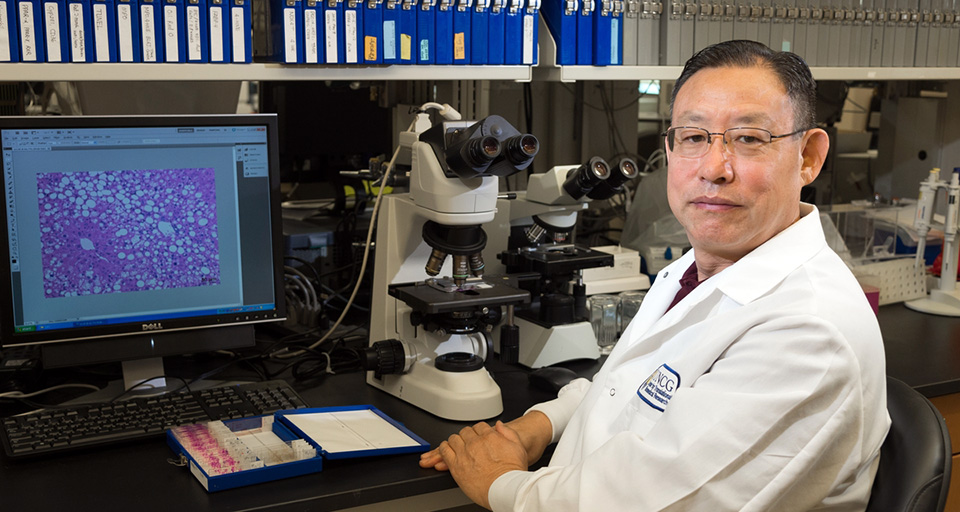Repost from NC Research Campus
A certain signaling pathway in the liver has been identified as a factor in the progression of alcoholic liver disease, report scientists from the University of North Carolina at Greensboro’s Center for Translational Biomedical Research (CTBR) at the NC Research Campus.
Peroxisome proliferator-activated receptor gamma (PPARγ) signaling governs several processes in the body tissues such as lipogenesis, lipid accumulation, glucose homeostasis, and the inflammatory response. This pathway is also associated with obesity, diabetes, atherosclerosis, and cancer, and the current study aims to demonstrate the previously unknown relationship between PPARγ signaling and the progression of alcoholic liver disease.
Alcoholic liver disease occurs in three distinct stages, beginning with steatosis: the permeation of liver cells with fat. Next, inflammation of the liver (hepatitis) ensues and the organ begins to form scar tissue (cirrhosis). Lifestyle changes can prevent progression of alcoholic liver disease, but once cirrhosis begins, only a liver transplant will prevent death.
There are several known mechanisms of fatty liver development:
- Increase of plasma corticosterone
- Zinc deficiency
- Hyperlipolysis of adipose tissue
- Reverse triglyceride transport to liver
- Leptin deficiency
However, UNCG CTBR scientists discovered a novel mechanism of fatty liver development that stems from hepatic PPARγ signaling, which they found to promote inflammatory cell infiltration, inflammatory chemokine production, liver injury, and lipid accumulation in hepatocytes. They conducted their experiments in mice after inducing alcoholic liver disease, and the mice that experienced a knockdown of PPARγ signaling saw an alleviation of alcohol-induced hepatic injury. This protective effect is due to a reduction of lipid accumulation and a decrease in inflammation.
The team from UNC-Greensboro is hopeful that their research could lead to the targeting of hepatic PPARγ signaling as a potential treatment for alcoholic liver disease. In addition to lifestyle changes, targeting this pathway could halt the progression of the disease and prevent the need for a liver transplant.
For more on the paper “Hepatic Peroxisome Proliferator-Activated Receptor Gamma Signaling Contributes to Alcohol-Induced Hepatic Steatosis and Inflammation in Mice” published in Alcoholism: Clinical and Experimental Review, click here.
By: Kara Marker, NCRC Marketing
Repost from NC Research Campus




